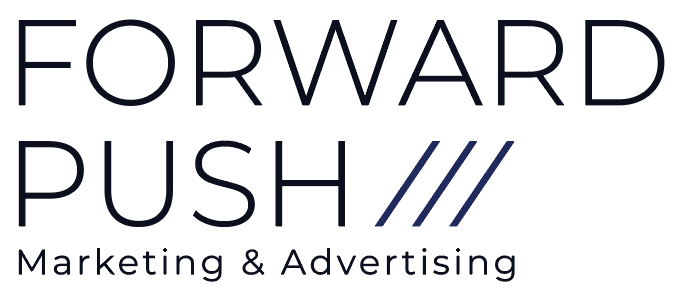Creating Patient Focused Paid Ads for Your Healthcare Practice
Finding new patients is always a challenge for medical practices and the competition will only increase. With nearly 5% of all searches on Google being health related, it makes sense to spend at least part of your marketing budget on ads that will be shown when patients are actively seeking a solution or provider who can help.
Whether your patient population is senior citizens or college seniors, everyone has more options than ever and greater access to information than ever before. With digital ad spend in the healthcare sector on pace to eclipse television ad spend, even midsized local practices need to develop a solid healthcare digital advertising strategy.
Healthcare Advertisers are Held to a Higher Standard
Advertisers in the healthcare space face the same competition and pricey keyword challenges as other professional industries, but healthcare advertisers also face other factors when creating advertisement copy.
In order to see success in paid search, healthcare advertisers must also consider compliance standards and regulations that restrict use of certain words and phrases and even some types of weight loss aids.
With healthcare also being tied to one’s well-being, happiness, and quality of life, Google categorizes site content and landing pages as “Your Money, Your Life” (YMYL) In order to protect the public from misinformation, content produced by YMYL pages are expected to meet tougher quality standards.
With the average acquisition cost per patient only likely to rise, it’s critical to understand all the steps that go into producing winning ads.
Understand What People Are Searching For
To produce winning ads, you’ll want to consider the reasons your ideal patients go online to look for medical information.
Most searches fall into three categories:
- Conducting basic research to get information about a new concern or a chronic condition
- Seeking guidance for making provider comparisons
- Patients looking for emergent advice to determine if they need immediate care
You’ll also need an understanding of how your ideal patient looks at maintaining their health.
Are they proactive about their health and seeking annual physicals or yearly diagnostics, or looking to control a chronic condition?
Or do you generally see a patient population that is reactive and typically seeks care only after a triggering event or health scare?
Think about how search intent lines up with your bread & butter services. These services are “low hanging fruit” and may already be converting well – making them good services to test the waters of paid advertising.
Think about the business goals for the practice that can align with patient needs to produce the best ROI (return on investment) from your ad budget.
Understanding why your patients seek healthcare services will be fundamental in producing effective ads. When you know what they are looking for online, you can target keywords and phrases to match their natural search queries.
Selecting Your Keywords
Now that you’ve considered how and why patients are seeking information and services online, it’s wise to create a list of relevant keywords. Your keywords should be relevant to your specialty, geolocation, treatment options, or any other phrases you believe will resonate with your ideal patient population.
It may feel like it, but you can never have too many potential keyword options to attract the right patients to your medical office.
Two places where you can see what keywords patients are already using to find you would be your Google My Business (GMB) insights or by using the Google Keyword Planner.
In the keyword planner you can get granular about searches at the hyper local level and check monthly search volume on certain keywords in your local area.
An effective keyword plan will have a blend of three types of keywords:
- Frequently asked questions like “what is causing my chest pain”
- Location based keywords like “chest pain doctor near me”
- Branded keywords like “Doctor’s Heart Hospital”
Broad keywords like “chest pain” have high search volume and higher competition but they are terms that patients will turn to Google to research before seeking out a new doctor. For most practices, these broad terms won’t show a good ad return because they are “owned” by big interests like WebMD or the Mayo Clinic.
Frequently asked questions as keywords may be where you start to see some utility for ad spend depending on your budget and the local competition for that search term. Think about the lifetime value of a patient when considering your ad placements.
A search for “chest pain doctor near me” yielded an ad for our local hospital system’s cardiology department. [graphic or image?]
Once you’ve gathered your initial list of keywords, you might want to scope out the competition. Search for your non-branded keywords and see what you get in the organic search results. Analyze the local three pack to see who Google has determined to be your top competition.
Check out their ads and see if you can leverage any of their strategies. Visit their site and make an honest assessment: what are they doing well? What could you do better?
Pro tip: Resist the temptation to Google yourself or your practice especially if you are running paid ads. The algorithm is so highly personalized based on your location, past activity, and nearly 100’s of other factors that you can adversely affect your organic ranking and ad effectiveness.
Location based keywords like neighborhoods and local landmarks can be great phrases to target in ads. Most patients like to stay within a narrow radius to receive care.
Plus, these location-based keywords will be your primary keywords for locally focused campaigns.
Leaning into a Local Strategy
By optimizing your Google My Business page, taking advantage of other industry listings and directories, and understanding the role of reviews in attracting new patients, you’ll quickly see the benefits of an effective local SEO strategy for growing your practice.
It’s a natural fit to create paid search ads that continue to build on your existing local SEO strategy for your practice.
Take Advantage of Location Based Ad Placement
Since most patients want to see doctors in their local area, it makes sense to use a location-based ad strategy. Local based businesses can define the radius where their ads are shown or you can target a specific geographic area like your town, city, or even your state.
You may find that your ads are very effective in the next town over if that potential patient population is currently underserved. Setting the right geographic parameters for your ads can be the difference between success and failure.
Timing is Everything
If you don’t have staff available to set appointments or receive incoming calls, it might be smart to schedule ads to run during normal clinic operating hours. This has two benefits: reducing patient frustration and capitalizing on call volume from ad spend.
People who call are people who convert.
Depending on your specialty, having someone available to quickly respond to patient inquiries can be the difference that drives the conversion. By scheduling your ads to run only when you can meet patient demand, you can focus on the most profitable times to run your ads and maximize your ROI.
One More Stop Before Your Office
With all your research in place around patient search intent, your primary practice goals, and a locally focused keyword plan and ad schedule, it’s time to design the landing page for your ad.
A landing page is the web page your potential patient lands on after they click on your ad.
It’s critical to get it right.
You want the content on the landing page to immediately let the prospective patient know they are in the right place and that you have the expertise and authority to solve their problem.
You also want your contact information on every single landing page. Every time.
Never assume that a patient will go find your phone number.
Remove any barriers or friction that could cause you to lose them at this point in the ad process. You’ve already paid at this point, so you want to keep them fully engaged and encouraged to take the next step.
To keep them engaged and get them to click through, focus on these key elements of a great landing page:
- Your page meets the goal of the person who lands on it
- The action they take – scheduling an appointment, etc. – aligns with their goals
- It’s easy and clear to take the desired action
- There is relevant information to help them make the decision to act
- The content of the page makes your practice the clear choice
While some industries can get away with short landing pages, healthcare professionals typically get better results with longer, patient-focused landing page copy.
When it comes to their health, people want sufficient information to decide, and that information should be presented with appealing visuals and a strong call to action.
Balance big blocks of text with bulleted lists, subheads, and snackable paragraphs that are easily digestible.
Avoid jargon and medical terminology that could be a barrier to a potential patient clicking through to contact your office.
Also consider accessibility concerns and present information in ways that are accessible to all types of learners. People like to consume information through video and a landing page is a great place to use video or other digital assets effectively.
Pro tip: If you’ve never written a landing page before, this is one of the most important pieces of an effective paid search strategy. Consider hiring a professional copywriter who has experience in the healthcare industry to ensure your landing page is compelling and will convert at a high level. Always check the copy for compliance and accuracy.
Get Even More Benefit from Your Existing Digital Assets
Video needs to be at the heart of your healthcare marketing strategy [link to FP video strategy for healthcare article] from your main practice website to your YouTube channel to your paid search landing pages. Not only do videos help you inform patients about the conditions you treat, services you deliver, or products you offer, video also helps patients feel connected to you.
When patients can see you “live” and get a preview of your communication style, you attract more patients who are willing to be compliant about what they need to do for their good health.
Video is a way to set yourself apart and to tell the story of your practice in a way that sets you apart from the competition.
Medicine is a complex discipline and using approachable videos helps to show patients what options are available to them and makes care more accessible.
Once Your Ads Are Running
When you first commit to adding a paid component to your digital marketing strategy, it’s normal to feel a little nervous. Just like the patient who comes to you for treatment, even doing the right things may not yield immediate results.
Resist the urge to make any sweeping changes without giving your campaigns time to catch on.
The benefit of paid ads is that everything is measured and that means you can make informed decisions about your campaigns. Give your ads at least a month to get solid metrics then evaluate, make changes, and optimize.
If your ads aren’t performing well and you aren’t sure what may improve your results, it’s the right time to get help from an online advertising expert.
Power Up Your Practice with a Smart Paid Search Strategy
No matter your practice area, your next patient is online right now looking for healthcare guidance and information. When you take the time to understand how patients want to access health related information online, you can create a keyword plan that meets those potential patients where they are and use that opportunity to promote your most profitable services to maximize the ROI of your digital advertising budget.
Using your existing digital assets in new online ads is another way to make your marketing dollars work harder for your practice.
Paid advertising is an effective way to drive results and acquire new patients. Mastering the strategies that are most effective takes time and attention to detail but get it right and you’ll be the provider they choose at the end of their Google search.




